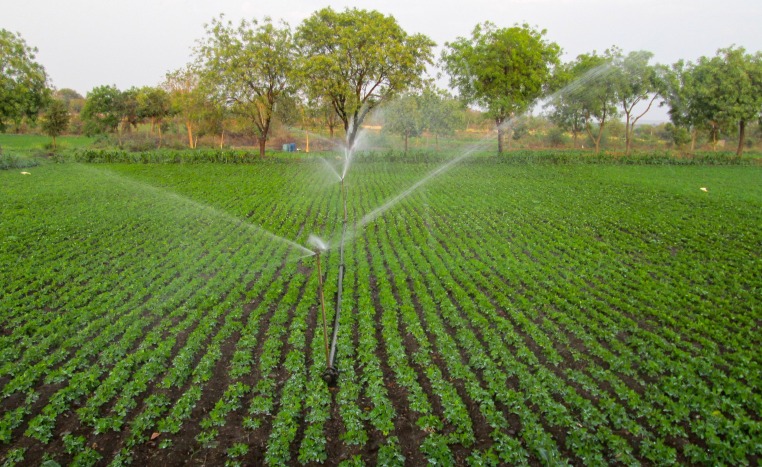Information related to Beneficial Groundnut Farming in India
Suitable Soil & Temperature

Groundnut is cultivated as an oilseed crop and its plant is of tropical climate. Due to this, its cultivation is done at the time of Kharif and Zaid. In India, groundnut is grown in large quantities in Andhra Pradesh, Tamil Nadu, and Gujarat. Apart from this, Madhya Pradesh, Uttar Pradesh, Punjab and Rajasthan are such states where groundnut is specially cultivated. Also, Groundnut seeds are used to extract large amounts of oil, after which it is used the most in food.
The protein content in Groundnuts is more than 25%, according to which it is compared with high protein items like milk, egg and meat in terms of protein. Its fruits are found inside the ground, which has to be dug out of the soil. Apart from eating, Groundnuts are also used to make many things. Good yield can be obtained from one hectare of groundnut field, from which the farmer brothers can also earn a good profit.
Some models like Powertrac euro 50 and others have a sound hydraulic system, which needs less maintenance.
Suitable Soil & Temperature
Light yellow loamy soil is required for a good groundnut crop. The land in its cultivation should have proper drainage. It should not be cultivated in waterlogged and hard clay soils. 6 to 7 P.H. The land of value is considered suitable for its cultivation. Its cultivation is done more in dry regions. Its plants grow well in heat and light, and they require 60 to 130 cm of rain.
Groundnut plants can tolerate a minimum temperature of 15 degrees and a maximum of 35 degrees. Apart from this, plants need an average temperature to grow well.
Field Preparation and Fertilizer
Groundnut cultivation requires friable soil. For this, first of all, the ground of the field is deeply ploughed with turning ploughs. After pressing, the field is left open for some time, due to which a sufficient amount of sunlight gets into the field’s soil. this 15 carts of old cow dung manure are added to the field and mixed well in the ground. After mixing the waste with the soil, apply water to it. After this, when the soil of the area starts appearing dry from above, the field is ploughed well by using a rotavator, due to which the soil of the field becomes friable. After the soil becomes friable, the land is levelled by a pat in the area.
If you want to use chemical fertilizer instead of natural manure in the groundnut field, you must apply NPK before the last ploughing. Neem cake is handy in the groundnut field, and it gives a good yield.
Planting Method
Groundnut seeds are planted in the form of sources. Before sowing the seeds in the field, the seeds are removed from the beans, after which they are treated with the amount of mancozeb or carbendazim. Due to this, the roots become disease-free, and their germination is also good. Therefore, it is best to sow its seeds between June and July. for planting
Irrigation
Groundnut crop is a Kharif crop, which its plants do not require much irrigation because the Kharif crop is done near the rainy season. Plants need water at an interval of 20 days after the rainy season. There is a need to maintain the moisture content in the field when the Groundnut plants start producing flowers and pods. This gives a good yield.
Weed Control
Weeds cause more damage to groundnut plants, and if there are more weeds in its crop, then there can be a reduction of up to 30 per cent in production. This is because its beans are in the average depth of the ground, and the roots of weeds named Duba, Samak, Metha and Pyaza are also in the average depth of the land, due to which the weed causes more damage the plants.
Both natural and chemical methods are used for weed control in groundnut plants. To get control of weeds by a natural process, three to four hoeing of its field is done. Its first weeding is done after 20 to 25 days, and the remaining weeding is done at 20 days. To get control of weeds by chemical method, 3 litres of Pendimethalin in 500 litres of water is mixed well, which has to be sprayed two days after planting the seeds.
Harvesting
Groundnut crop is dug up after 4 months. When its plants appear fully ripe, then they should be excavated. However, after harvesting the crop, they are dried in intense smoke, due to which the moisture of the beans is completely lost. Moreover, due to humidity, the risk of mould growth increases.
Also, you should be appropriately trained for operating highly advanced tractors like Swaraj 744 and more. If you are not adequately trained, you can’t handle them easily. Stay with us for more similar blogs.



